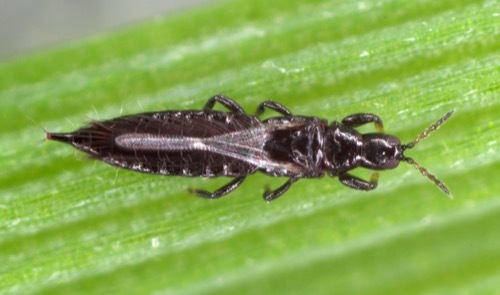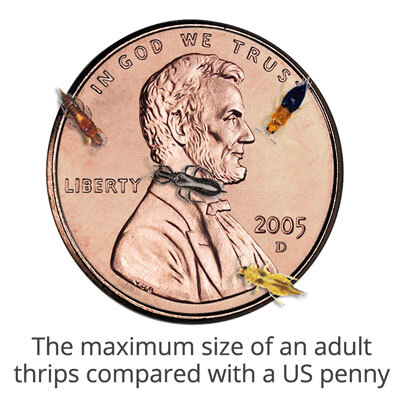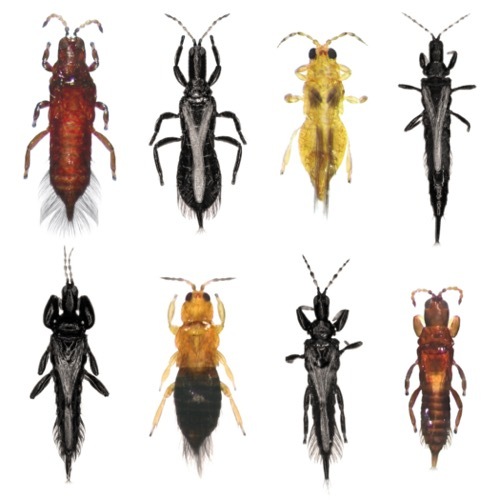Thrips Found in the United States


Adult thrips are slender and tiny, at 1/50- to 1/25-inches long. Adult thrips can be seen above compared to a U.S. penny for a size comparison.
The nymphs look like even smaller adults, with some differences in coloration.
Thrips appear to be tiny dark slivers on your plants. They have elongated bodies, and their long, narrow wings have a fringe pattern along their edges.

There are many types of thrips in different colors. Thrips change in color between larval and adult stages, and thrips larvae tend to be light green or yellow rather than the darker colors many adult thrips display. Their eyes are sometimes visibly red.
Some of the most common colorations for adult thrips include:
- Translucent yellow or whitish colors
- Dark brown or black
- Less common varieties may be bright colors such as red-orange
There are several thousand varieties of thrips in the world, and hundreds of varieties can be found across the United States. Some are most commonly found in the Southeastern states, but others may be found from coast to coast, appearing wherever their preferred plant food source is readily available.



